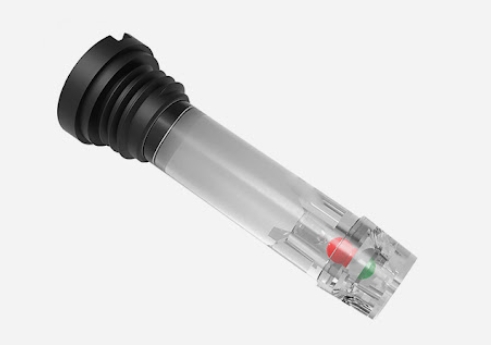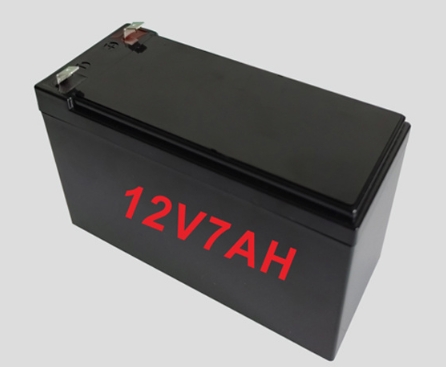Failure Modes of Lead Acid Batteries
- By: JinHan
- Sep 02,2022
follow us
Due to the differences in the types of plates, manufacturing conditions and use methods, the reasons for the failure of batteries are different. To sum up, the failure of lead-acid batteries has the following situations:
↘ Corrosion variant of positive plate
There are three types of alloys currently used in production: traditional lead-antimony alloys, with an antimony content of 4% to 7% by mass; low antimony or ultra-low antimony alloys, with an antimony content of 2% by mass or less than 1% by mass Fraction, containing tin, copper, cadmium, sulfur and other modified crystal agents; lead-calcium series, actually lead-calcium-tin-aluminum quaternary alloy, the content of calcium is 0.06% to 0.1% mass fraction. The positive grids cast from the above alloys will be oxidized into lead sulfate and lead dioxide during the charging process of the battery, which will eventually lead to the loss of the function of supporting active substances and the battery failure; or due to the formation of lead dioxide corrosion layer, lead to lead dioxide. The alloy produces stress, which causes the grid to grow and deform. When the deformation exceeds 4%, the entire plate will be destroyed, and the active material will fall off due to poor contact with the grid, or short-circuit at the bus bar.
↘ The active material of the positive plate falls off and softens
In addition to the shedding of the active material caused by the growth of the grid, with the repeated charging and discharging, the bonding between the lead dioxide particles is also relaxed, softened, and detached from the grid. A series of factors, such as the manufacture of the grid, the tightness of the assembly, and the charging and discharging conditions, all have an impact on the softening and shedding of the active material of the positive plate.
↘ Irreversible sulfation
When the battery is over-discharged and stored in a discharged state for a long time, its negative electrode will form a coarse lead sulfate crystal that is difficult to accept charging. This phenomenon is called irreversible sulfation. Slight irreversible sulfation can still be recovered by some methods. In severe cases, the electrode fails and cannot be charged.
↘ Premature loss of capacity
When low antimony or lead-calcium is the grid alloy, the capacity suddenly drops in the early stage of battery use (about 20 cycles), which makes the battery ineffective.
↘ Serious accumulation of antimony on active substances
The antimony on the positive grid is partially transferred to the surface of the active material of the negative plate with the cycle. Since the overpotential of H+ reduction on antimony is about 200mV lower than that on lead, the charging voltage decreases when antimony accumulates, and the large Part of the current is used for water splitting, and the battery fails to charge properly.
The antimony content of the negative electrode active material of the lead-acid battery with a charging voltage of only 2.30V was tested, and it was found that the content of antimony in the surface layer of the negative electrode active material reached 0.12% to 0.19% mass fraction. For some batteries, such as batteries for submarines, there are certain restrictions on the hydrogen evolution of batteries. The battery negative electrode active material with hydrogen evolution exceeding the standard was tested, and the average antimony content reached 0.4% mass fraction.
↘ Thermal failure
For low-maintenance batteries, the charging voltage is required not to exceed a single cell of 2.4V. In actual use, such as in automobiles, the voltage regulator may be out of control, the charging voltage is too high, and the charging current is too large, and the heat generated will increase the temperature of the battery electrolyte, resulting in a decrease in the internal resistance of the battery; Enhanced charging current. The temperature rise of the battery and the excessive current reinforce each other, which is ultimately uncontrollable, causing the battery to deform, crack and fail. While thermal runaway is not a frequent failure mode for lead-acid batteries, it is not uncommon. When using, pay attention to the phenomenon that the charging voltage is too high and the battery heats up.
↘ Corrosion of the negative busbar
Under normal circumstances, there is no corrosion problem in the negative grid and the busbar, but in the valve-regulated sealed battery, when the oxygen cycle is established, the upper space of the battery is basically filled with oxygen, and the busbar is more or less the electrolyte in the diaphragm. The lugs climb up to the busbars. The alloy of the busbar will be oxidized to further form lead sulfate. If the electrode alloy of the busbar is not properly selected, there will be slag inclusions and gaps in the busbar, and the corrosion will deepen along these gaps, causing the tabs to separate from the busbar, and the negative plate will fail.
↘ Diaphragm perforation causes short circuit
Individual varieties of diaphragms, such as PP (polypropylene) diaphragms, have large pore sizes, and the PP fuse will shift during use, resulting in large pores, and the active material can pass through the large pores during charging and discharging, causing micro-short circuits, the battery will fail.
--End--

 English
English Russian
Russian Portuguese
Portuguese Arabic
Arabic Bangla
Bangla Indonesian
Indonesian








